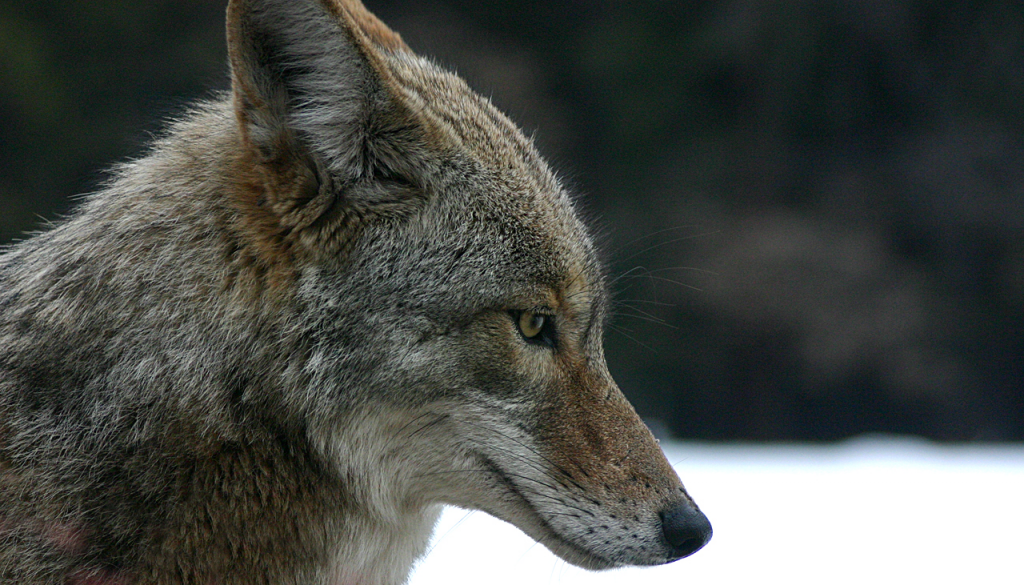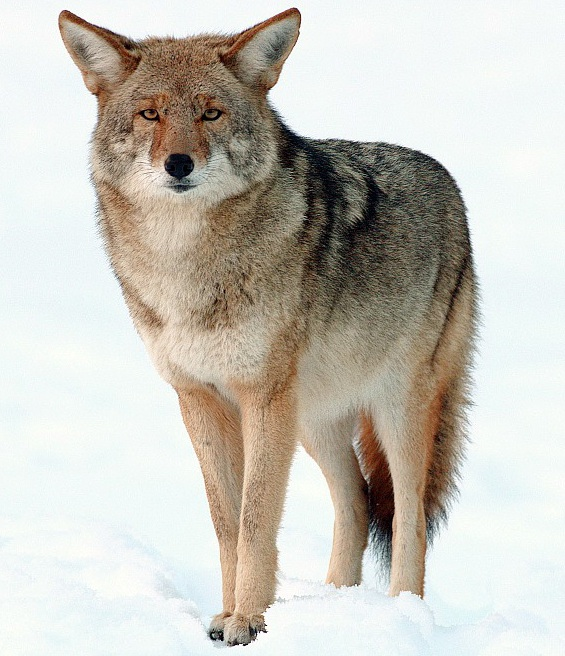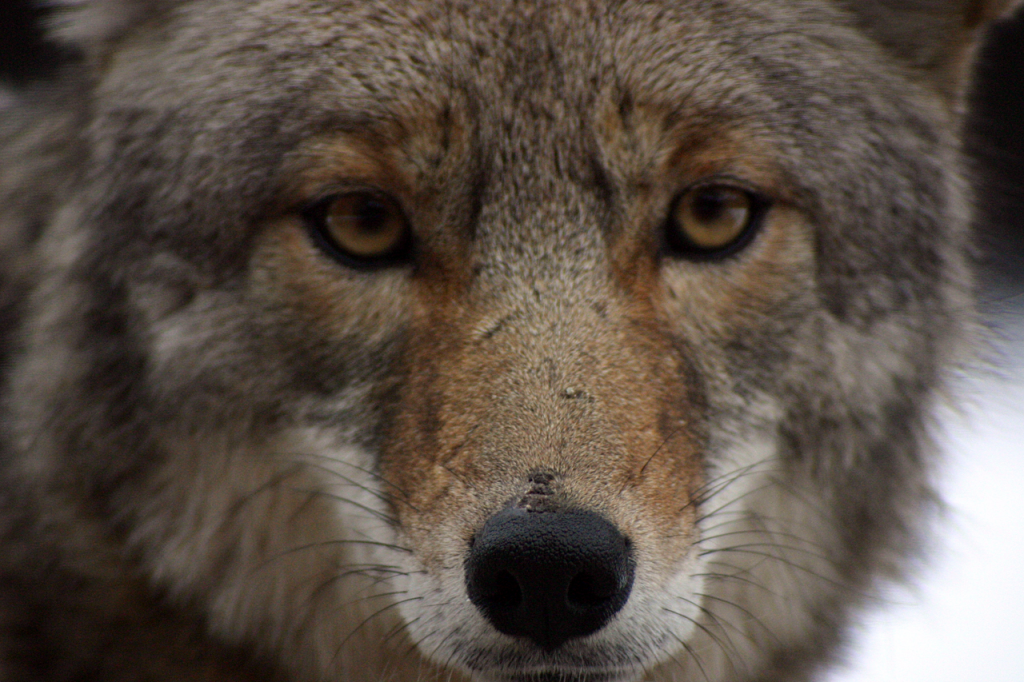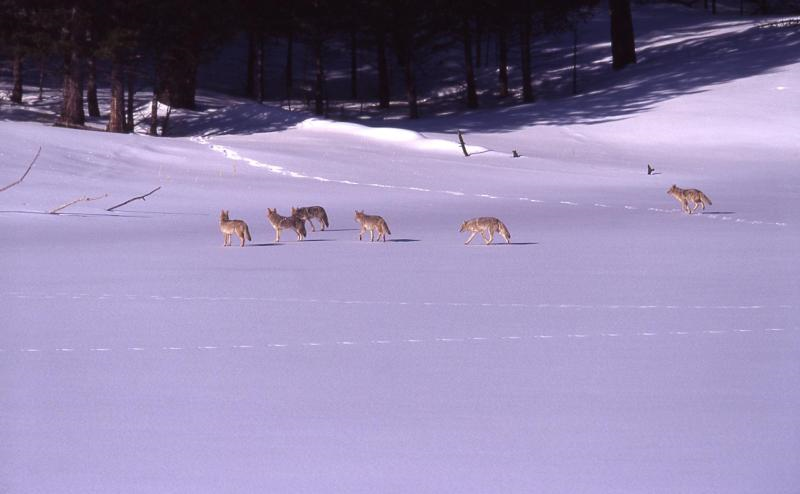Coyotes have earned a reputation for their outstanding adaptability, which has been demonstrated by their success in urban habitat. Their cunning has been spread throughout generations by Native American tales, and have become potential flagship species. A key cause of coyote success is due to their optimistic foraging behaviour. Primarily feeding on small mammals such as rabbit, and mice, however are known to change diet to snakes, birds and insects. Occasionally coyotes form hunting packs, which are utilized for hunting deer.

Christopher Bruno
CC BY-SA 3.0
It was early morning; the sun had just barely crested the field edge. Casting first light out onto a snow-blanketed field. Cold bite at my nose and finger tips as I laid sprawled out on my cushion of hay. Nearby several cows would cast me a curious glance before shuffling slightly closer, so that they could get to the much-desired hay. After a couple of minutes, a lone shape raised up along the ridgeline. The rising sun outlined the individual, so that it was easily recognizable. I determined it was a coyote, which were common in the area. Lone coyotes would often scavenge on cattle that had died over the winter, or snatch any stray chicken. The coyote trotted along the field edge for a short distance, before looking back over it’s shoulder.

Yathin S Krishnappa
CC BY-SA 3.0
As if prearranged, five more coyotes then emerged from the same area the first coyote was seen at. They followed along the initial trail made by the first, in a single-file lane until they had caught up. Once the six were altogether, the latest five began to play amongst each other. This was mainly composed of nipping at each other, or collapsing in a wrestling heap of fur. The first coyote had lain down in the snow, taking full advantage of the open sunlight. After several minutes, a seventh coyote appeared along the ridge line, although he appeared to be limping. He slowly followed along, taking significantly longer to reach the gathering place. Upon reaching the rest of the group he sat down, while the rest investigated the recent arrival. Minutes after the newest coyote reached the group, the one basking the sun got up and continued along the ridgeline. Three of the others immediately followed, while another waited a little while before following along. After some a fair amount of time the injured one and one who stayed behind started to follow, however the limping one was always falling behind. The one who stayed behind would trot back to the injured one every so often. The 4 coyotes in the middle continued to play as they followed, often biting at each others’ heels. Several times the coyotes would end up, walking extremely close to a group of cattle which littered the landscape. The cattle and coyotes often disregarded each other, and keep moving along. This was not unexpected since coyotes are often seen intermingled within a herd scavenging, although sometimes if a coyote gets too close, a cow will fake charge them. One by one the coyotes walked past the fields far side, disappearing into woods.

Christopher Bruno
CC BY-SA 3.0
It took about an hour for them to complete their journey across the field, but it provided interesting insight to social dynamic of coyotes. It was interesting to see the amount of concern, and help the injured coyote received, although it is mentioned that coyotes can form strong family bonds. Coyote pack formation is not typical, and is usually influenced by high population densities, which increases the need for greater food supply. Packs only are formed during winter months, and break apart in spring for reproduction. This creates a unique, and fascinating interaction between individuals, where cooperation occurs even though there may be not genetic relation. However, this pack displayed playful behaviour, and provided assistance for an injured member, even though the pack will disperse in a month. Such drastic altruistic behaviour is not commonly observed. Overall, there is much we can learn about animal sociality still, and coyotes provide a unique system unlike the common forms found in species such as wolfs, bees, and monkeys.


Recent Comments